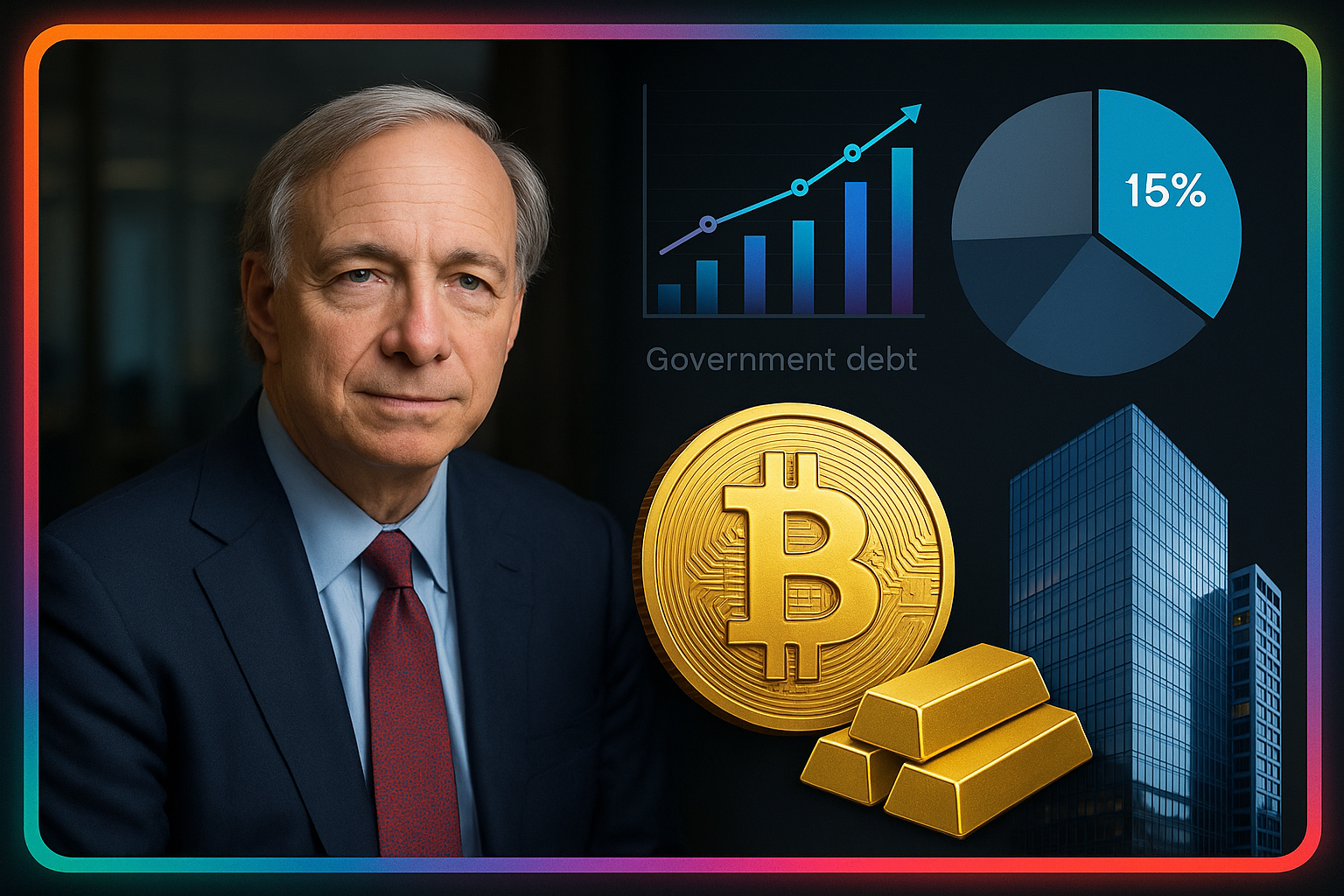Ray Dalio Backs Bitcoin: 15% Allocation Sparks New Wave of Institutional Interest.

As US government debt surpasses 36 trillion dollars and projections point to another 12 trillion in upcoming issuance, legendary investor Ray Dalio is once again challenging conventional portfolio thinking. His latest advice is striking: investors should consider allocating up to 15 percent of their portfolios to Bitcoin or gold.
“It would be both risk-reducing and return-enhancing to consider putting perhaps 5 to 10 to 15 percent into a mix of gold and Bitcoin,” Dalio told CNBC, noting the diminishing reliability of fiat currencies under sustained monetary expansion.
Just two years ago, Dalio suggested a far more modest exposure to crypto assets. What changed?
A system under pressure
In his recent commentary, Dalio describes the current macroeconomic trajectory as a debt-driven loop. The cost of servicing debt rises. Issuance accelerates. Confidence in fiat currency erodes. According to the U.S. Treasury, interest payments on federal debt have already exceeded 970 billion dollars on an annualized basis as of mid-2025 — a 38 percent increase from the previous year.
This erosion in trust, Dalio argues, makes it increasingly reasonable to diversify into limited-supply assets. Gold remains his preferred choice for its liquidity and historical role as a reserve asset. But for individual investors, Bitcoin is emerging as a credible alternative, particularly in a climate of structural fiscal imbalance.
“Bitcoin isn’t ideal for central banks,” Dalio noted in an interview with CNBC, “but it makes sense in a well-balanced portfolio if you understand its characteristics.”
He added: “It would be both risk-reducing and return-enhancing to consider putting perhaps 5 to 10 to 15 percent into a mix of gold and Bitcoin.”
From idea to infrastructure
Market participants appear to be taking this shift seriously. According to Nomy Research, the share of private portfolios with BTC exposure has increased by over 22 percent in the first half of 2025 across Europe and the Gulf region. In Germany, high-net-worth individuals have doubled their average BTC holdings since Q4 2024, while family offices in the UAE report allocating 10 to 18 percent of their portfolios to crypto, with a primary focus on Bitcoin. This trend is most pronounced among investors actively seeking long-term hedging strategies amid growing concern over fiat depreciation and sovereign debt exposure.
More interestingly, the use of Bitcoin is evolving. While early adopters focused on simple accumulation, newer strategies increasingly involve deploying BTC in yield-bearing mechanisms without relinquishing ownership. This shift is particularly evident among institutional-grade platforms integrating Bitcoin into structured income strategies.
According to Nomy Research, demand for BTC-linked staking solutions has grown significantly in 2025, driven by investors seeking exposure to upside while retaining capital control. Yields vary by term and liquidity conditions, but select programs have reported returns exceeding 150 percent APY. Nomy Finance is one example of this model in action, offering non-custodial BTC staking products designed to optimize on-chain productivity without introducing unnecessary counterparty risk.
Rather than treating Bitcoin solely as a passive store of value, these developments reflect a broader transition toward its use as an income-generating, portfolio-integrated asset. For a growing cohort of allocators, this represents not just protection from fiat erosion, but a means of actively compounding returns within a constrained-supply framework.
The broader trend
This shift aligns with macro trends. Gold reached new highs above 3,300 dollars per ounce this summer. Bitcoin, meanwhile, approached 123,000 before stabilizing near 118,000. Search interest in “alternative portfolio protection” is up sharply, and on-chain data reflects increasing long-term holdings.
In this context, Dalio’s 15 percent is not an aggressive move. It is a signal that the rules of portfolio construction are changing.
Conclusion
Bitcoin is maturing from a speculative instrument into a strategic asset class. Infrastructure is adapting accordingly. Whether through holding or participation in risk-managed yield strategies, the market now offers several ways to act on the shift Dalio describes.
For investors recalibrating around inflation, debt exposure, and currency risk, that may be the most important message of all.
Disclaimer
Disclaimer. This is a Corporate Press Release. Readers should do their own due diligence before taking any actions related to the promoted company or any of its affiliates or services. Cryptopolitan.com is not responsible, directly or indirectly, for any damage or loss caused or alleged to be caused by or in connection with the use of or reliance on any content, goods or services mentioned in the press release.